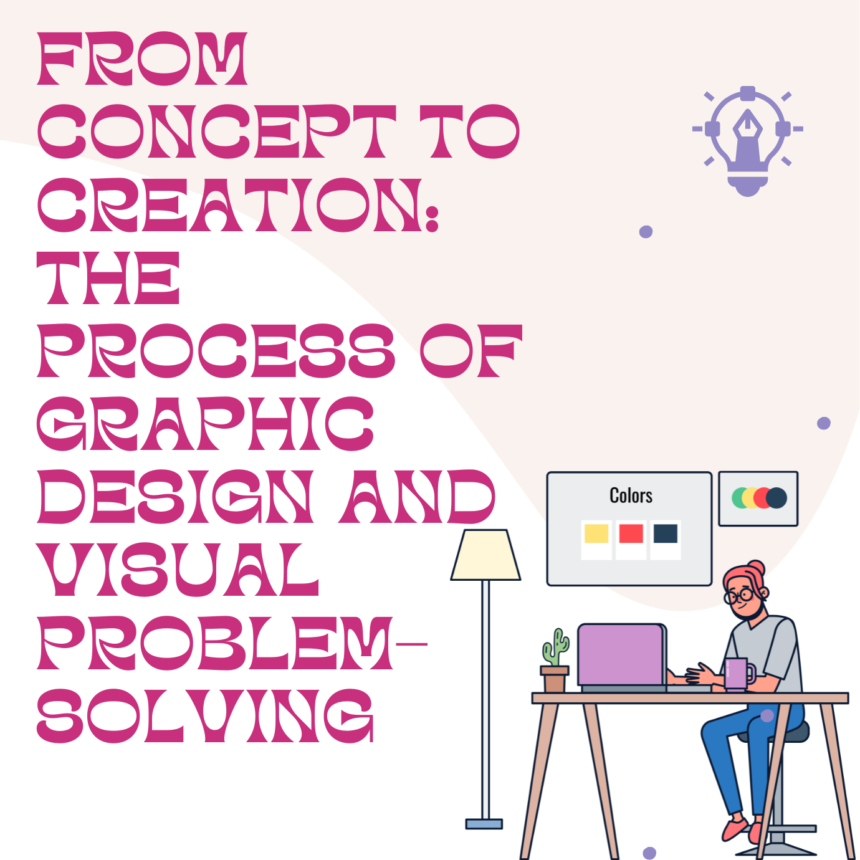Graphic design is a creative and iterative process that involves transforming ideas and concepts into visually appealing and effective designs. It requires a combination of artistic skills, critical thinking, and problem-solving abilities. Here’s an overview of the process of graphic design and how it involves visual problem-solving:
1. Understanding the Design Brief:
The graphic design process begins by thoroughly understanding the design brief provided by the client or project stakeholders. This involves gathering information about the goals, target audience, brand identity, project requirements, and any specific design considerations.
2. Research and Gathering Inspiration:
Graphic designers conduct research to gather inspiration, explore design trends, and gain insights into the industry or subject matter. They analyze competitors, study design references, and collect relevant visual references to inform their creative process.
3. Concept Development:
Based on the understanding of the design brief and the insights gathered, designers begin brainstorming and sketching ideas to develop concepts. They explore various design directions, experiment with typography, layout, colors, and imagery, and refine their concepts through iterations.
4. Visual Problem-Solving:
Graphic designers tackle visual problems throughout the design process. This involves finding creative solutions to challenges related to communication, hierarchy, readability, aesthetics, and user experience. They consider factors such as legibility, visual appeal, effective composition, and appropriate use of graphic elements to solve these problems.
5. Creating Initial Designs:
Using design software and tools, designers translate their refined concepts into initial digital designs. They focus on creating a balance between creativity and practicality, ensuring that the designs align with the project requirements and effectively communicate the intended message.
6. Iterative Design Refinement:
The initial designs undergo an iterative process of refinement and feedback. Designers seek feedback from clients or stakeholders, gather insights, and make necessary revisions to improve the designs. This iterative approach helps in evolving the design and ensuring it meets the desired objectives.
7. Typography and Visual Elements:
Graphic designers carefully select typography and other visual elements to enhance the design’s aesthetics and readability. They consider factors such as font choices, hierarchy, spacing, and alignment to create visually pleasing and cohesive designs.
8. Color Selection and Application:
Colors play a significant role in graphic design. Designers consider color psychology, branding guidelines, and visual harmony when selecting colors for the design. They apply colors strategically to evoke specific emotions, create visual contrast, and reinforce the overall design concept.
9. Finalizing the Design:
Once the design refinements are complete, designers finalize the design by ensuring that all elements are in place, the layout is well-balanced, and the design meets all the project requirements. They review the design for accuracy, consistency, and overall visual impact.
10. Delivery of Final Design Files:
The final design is prepared for delivery in the required file formats, resolutions, and specifications. Designers provide the necessary design files to clients or stakeholders, ensuring that they are ready for implementation in various mediums such as print, digital platforms, or other marketing collateral.
Throughout the process of graphic design, designers continually evaluate and make design decisions based on their artistic instincts and the project’s requirements. They combine creativity with problem-solving skills to ensure that the final design effectively communicates the intended message, resonates with the target audience, and meets the project’s objectives.
By following a structured process, graphic designers can create visually compelling and impactful designs that solve visual problems, deliver engaging visual experiences, and effectively convey messages to the intended audience.
